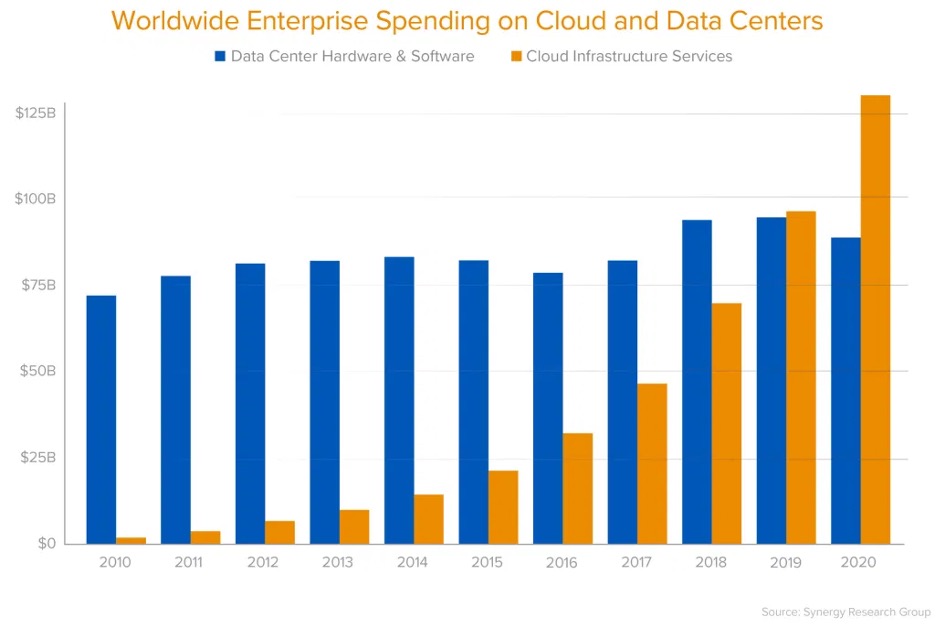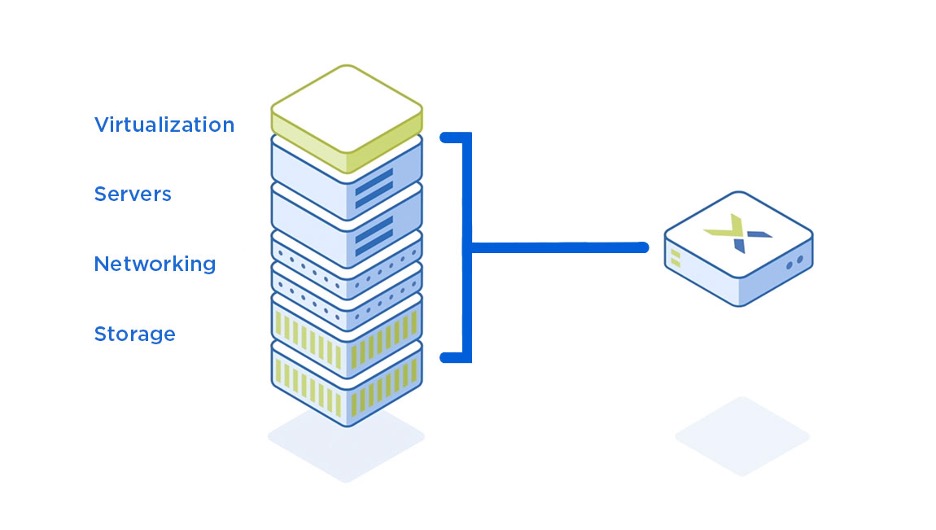Is there any hope for economic advantages in the cloud? Tony Palmer says yes…it’s just a matter of knowing where to look.
Palmer is a principal validation analyst at Enterprise Strategy Group [esg-global.com] (ESG, a division of TechTarget), a technology consulting group based in the Boston suburb of Newton, Massachusetts. One of ESG’s specialties is validating the effectiveness of popular enterprise technologies and publishing in-depth reports on the company’s findings.
“A technical validation has elements of testing to see whether a product or solution works as advertised,” Palmer said in an interview with The Forecast by Nutanix.
Palmer noted that validation goes beyond documenting the performance of hardware and software: It must demonstrate the business value of a technology solution.
What Are the Economic Advantages of the Cloud?
Validating the economic advantages of the cloud is a popular pastime for technology analysts. There’s no question that the cloud delivers agility, speed, and scale. However, what about cloud efficiency? That’s a much taller obstacle because cloud costs typically rise in tandem with cloud consumption.
This quandary inspired an influential article published by Andreesen-Horowitz, the Silicon Valley venture capital firm, in 2021. The article noted that as enterprise cloud deployments expand, businesses’ costs explode, shaving billions off their market capitalization and diverting money that might be better spent on more pressing concerns like expanding market share or transforming the customer experience.

Image Source: a16z
As a validator of technology products — particularly cloud offerings — Palmer has a front-row seat in businesses’ embrace of cloud technologies.
“Maturation is rapidly accelerating,” he said. “It's a viable place for your business to live.”
ESG’s market research supports this thesis. Nine out of 10 companies ESG surveyed were digitally transforming their businesses in an effort to grasp the economic advantages of the cloud.
“Eighty percent said they have applications and workloads that are strong candidates to move to the public cloud over the next five years,” Palmer added.
However, many of these cloud adopters will face sticker shock when the full cost of renting space in the cloud at scale becomes clear. Moreover, they’ll soon discover the complications of repatriating workloads to on-prem data centers, even if on-prem costs less.
At the same time, they want to preserve the speed-and-scale advantages of the cloud. The savvy response is to optimize — scanning for efficiencies that make cloud expenses manageable.
The answer, then, is that the economic advantages of the cloud come from the long-term savings that are possible through full hybrid cloud migration and a willingness to capitalize on the unique advantages of the cloud as a permanent strategy.
Modern Tools Further Boost Cloud Efficiency
In the past, attaining economic efficiency in a hybrid multicloud setting would be a matter of meticulously optimizing one’s own infrastructure and carefully forecasting the future to verify if the investment is worthwhile.
During tough economic times, though, organizations need smarter, more efficient ways to leverage the public cloud. Realizing economic efficiency does not have to be a painstaking and costly process if modern tools exist that can help businesses extract value from cloud platforms.
Nutanix Cloud Clusters is a product that promises to satisfy the needs of companies seeking to capitalize on the economic advantages of the cloud through the unification of private and public infrastructures.
NC2 allows IT teams to copy the software-defined operations on their own private cloud and generate an exact copy of that system in the public cloud, so the company can leverage public cloud computing resources when needed.
The Microsoft Azure cloud ecosystem also offers exceptional tools and services for managing applications in a public cloud space. For those with a goal of expanding into a hybrid or multicloud framework, NC2 on Azure serves to accelerate the process and lower costs, all while maintaining high compatibility with Azure-native services.

Key use cases illustrate what economic advantages of the cloud are possible through the adoption of NC2, Azure, and other modern cloud tools. Organizations are using these tools to strengthen data retention, automatically manage nodes, and facilitate built-in networking integration across clouds.
The Economic Advantages of Virtualization and Automation
One path to cloud efficiency emerged in a technical validation Palmer and co-author Kerry Dolan conducted in 2021. They took a deep dive into the performance of Nutanix Cloud Platform, which uses virtualization, automation, and intuitive dashboards to simplify cloud management.
Nutanix pioneered software to emulate the conventional three-tiered data center (compute, storage, and networking) with what’s called hyperconverged infrastructure. HCI allows IT admins to spin up a computing environment in a fraction of the time required with previous generations of technology.

Components of the IT stack that exist simultaneously in hyperconverged infrastructure.
The result: “A business that needs to deploy a new application gets it into production faster,” Palmer said.
How much faster?
Palmer has studied the process in detail. One company he analyzed was averaging about 38 person-hours a week to deploy a cluster in the cloud. Nutanix’s software slashed that time to about an hour.
“It’s really spectacular,” he said of this automation that removes painstaking manual processes.
Automation also dramatically reduces the consumption of cloud resources, which is crucial to fully realizing the economic advantages of the cloud.
“You're leasing hardware by the minute” in the cloud, Palmer explained. Every reduction in the minutes, hours, and days of cloud operations helps companies economize and optimize the management of their cloud environments.
“We validated significant cost and productivity savings for any sized organization through orchestration and automation of IT resources and operational tasks,” he said.
“Some of those included up to a 97% faster time to a day-one infrastructure deployment in the cloud — rather than on-premises — and up to 96% reduction in IT administrator costs for deployments with clusters on AWS when it was compared to traditional infrastructure in a data center.”
These findings reflected ESG hands-on testing of AWS-based clusters and calculations based on discussions with customers using the software in the field, Palmer said.
“We tried to be as conservative as we could and only use data we got directly from customers. That's why we can stand behind those numbers.”
What Goes Into a Technical Validation
A quick review of Palmer’s validation of Nutanix tools illustrates the hallmarks of a sophisticated appraisal of cloud-related technologies and the overall economic advantages of the cloud. These are the kinds of factors that all companies need to explore when appraising software options, though ESG cautions that these tests are just a starting point because every company has different needs.
In its Nutanix validation, ESG focused on three primary technology disciplines that crop up often in cloud environments.
Databases
Running databases in the cloud requires high-performance technology infrastructure. ESG assessed Nutanix software on MY-SQL and Oracle databases, measuring data points like input/output per second and transactions per minute. Test results named the specific hardware and software for each test and described in-depth how the results were tabulated.
ESG also compared the 2020 version of Nutanix software to the 2021 version. A fair assessment of the results was that Nutanix lived up to its promises across all the experiments ESG conducted, yielding the possibility of strong economic advantages in the cloud.
ESG also put Nutanix software through its paces with big data and analytics technologies such as data lakes and Splunk SmartStore. For instance, ESG assessed how well Nutanix tools optimized the query and copying processes in data lakes, which provide a central location for structured and unstructured data that learning algorithms can analyze to cull business insights.
In the Splunk test, ESG measured Nutanix’s ability to scale mixed Splunk workloads, comparing random IOPS, sequential IOPS, random throughput, and sequential throughput. They also compared the total cost of ownership of Splunk on bare metal against Splunk SmartStore on Nutanix.
End-User Computing
Virtual desktop infrastructure technology proved critical to companies enabling remote work in response to the COVID-19 pandemic. ESG set up experiments to test Nutanix’s VDI solution in two key areas: the linear scalability of a Citrix VDI environment, and a log-on storm of 1,400 virtual desktops.
The first test measured Nutanix’s VDI technology on a small cluster with users running advanced applications like Microsoft Office and Adobe Acrobat, then ramped up to a much larger environment to ensure performance didn’t lag as the scale expanded. The second test assessed the user performance of more than a thousand people logging in at the same time, which would be common on most workdays.
“Our lab is virtual, so all the testing was done remotely,” running clusters on AWS, Palmer said. “Anyone can set up exactly the same cluster and run it — and validate almost everything in the report.”
Seizing the Future Economic Advantages of the Cloud
Advances in optimization, automation, virtualization, and validation all constitute the best in current and modern methods of finding economic efficiencies in the hybrid multicloud. Companies that adopt these advancements know exactly what the economic advantages of the cloud are.
In preparing for the future, though, it is necessary to keep an open mind about new challenges and new solutions that will arise. With the recent emergence of tools like NC2, which makes the transition to a cost-efficient hybrid model possible, this necessity is increasingly apparent.
Making the most of such tools as they become available allows for future-proof cloud-native development. Going fully cloud-native comes with its own challenges, but these are obstacles that an organization equipped with hyperconverged infrastructure is prepared to tackle.
While the future of IT is in the hybrid multicloud, many companies still face the challenge of recognizing the immediate economic advantages of the cloud. With so many possible solutions to choose from, the right option is often the one that promises the most simplicity for the organization adopting it.
Editor’s note: Download “Evaluating Nutanix Clusters for Hybrid Multicloud Environments.”
This is an updated version of the original article published on February 10, 2022.
Tom Mangan is a contributing writer. He is a veteran B2B technology writer and editor, specializing in cloud computing and digital transformation. Contact him on his website or LinkedIn.
© 2023 Nutanix, Inc. All rights reserved. For additional legal information, please go here.

